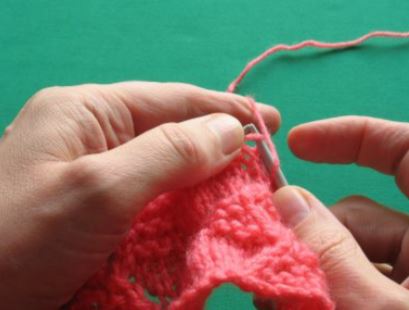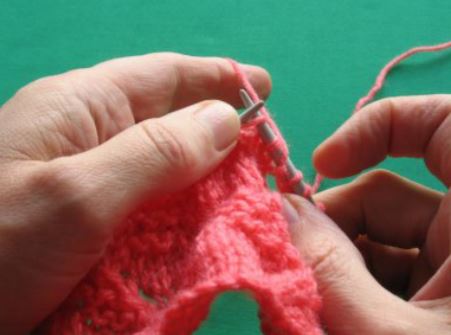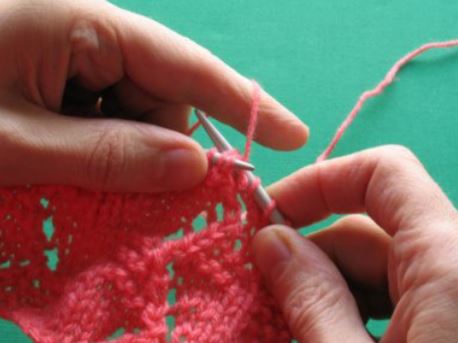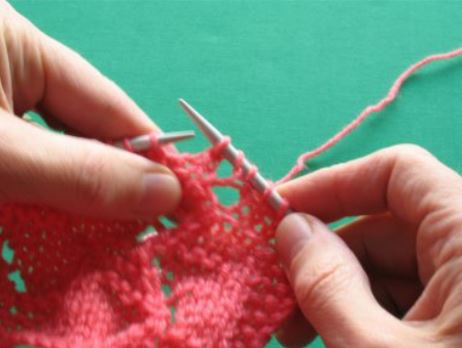As soon as you start to knit anything more complicated than a scarf you are likely to need to know how to increase and decrease the number of stitches you are working with. In this article, we will show you different methods on how to decrease stitches. Your pattern will usually tell you what method to use.
K2tog (knit two together)
The easiest way to decrease is to knit two stitches together or to purl two stitches together. Both of these create the effect on the knit side of a decrease sloping to the right such as you would use on the left hand side of your garment, for example on raglan shaping. To knit two stitches together you insert the right hand needle into the next two stitches together.
Put the point of the needle into the 2nd stitch as if to knit and then follow through into the first stitch. Then pass the yarn around and pull through to leave just one stitch on the right-hand needle allowing both the stitches to drop off the left-hand needle.
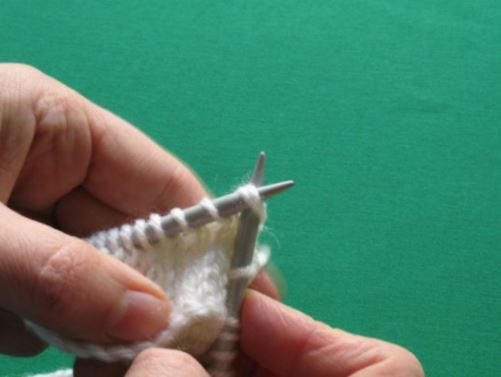
Tip: Make your increases or decreases at least one stitch in from the edges of the work to keep the edges neat and even.
This video demonstrates how to decrease using k2tog (knit two together):
P2tog (purl two together)
Sometimes you will be required to decrease on a purl row using purl two together (p2tog). This is done by putting the right hand needle through the first stitch as normal when making a purl, then continuing on to put it through the next stitch as well. Then wrap the yarn around and pull the loop through as you would for a normal purl stitch letting both the stitches on the left hand needle drop off.
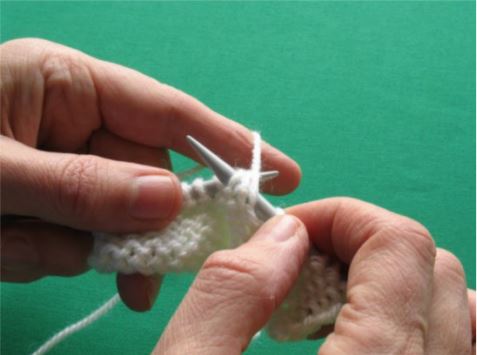
Skpo or Skpsso (slip 1, knit 1, pass slipped stitch over)
To make a decrease that slopes to the left uses the slip one, knit one, pass slipped stitch over method of decreasing. You would use this on the right-hand side of a piece of work.
Slip the first stitch over onto the right-hand needle knitwise. That is put the point of the needle into the stitch as if to knit it and allow it to slip onto the right-hand needle without putting the yarn round at all. Then knit the following stitch. Both stitches are now on the right-hand needle.
With the point of the left hand needle lift the slipped stitch over the top of the knitted stitch and off the right hand needle.
The video below demonstrates how to decrease using skpsso:
Ssk (slip next 2 stitches knitwise, then knit them together)
This decrease is used in lace knitting to form a travelling knit stitch up the side of a series of holes. It has the effect of travelling to the left as you face the work.
Slip the first stitch onto the right hand needle knitwise. Then slip the next stitch onto the right hand needle knitwise. Take the point of the left hand needle through the front of both these stitches from left to right. At this point it will look as though you are knitting two stitches together through the back of the loops. Knit the two stitches together.
The difference between ssk and k2tog tbl (knit 2 together through back of loops) is subtle but important. With ssk, the resulting knit stitch is open whereas with k2tog tbl the knit stitch is twisted at the bottom. Going back to the analogy of a scarf around the neck it’s the difference between the scarf hanging loosely or being crossed across the chest.
Tip: Make sure the yarn over stays on the right-hand needle and doesn’t slip off, or you will have lost the hole.
